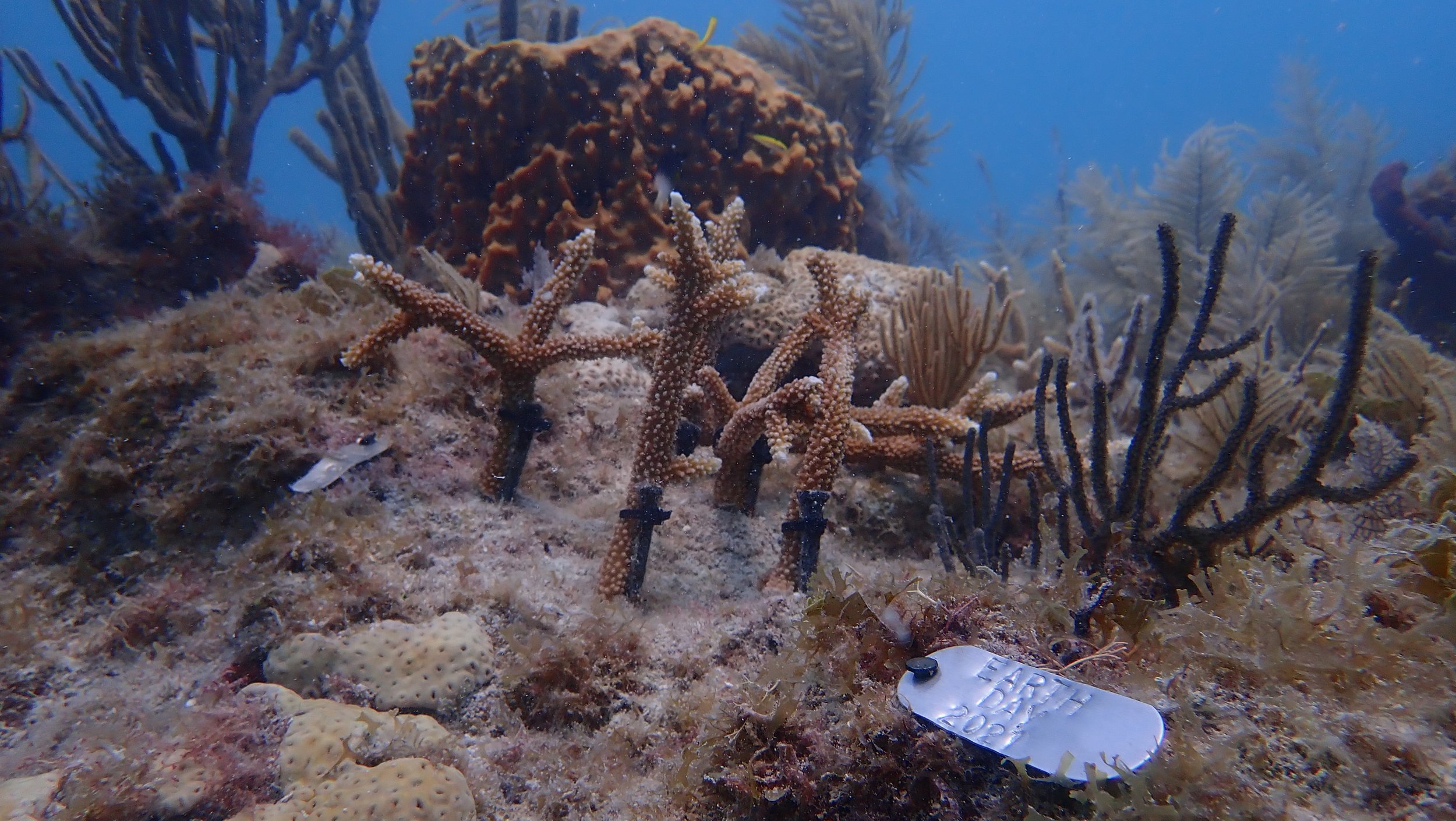Florida Coral Labs / Labs Around The World
Written by Wildlife & Welfare Researcher Rose Little.
As part of our April edition of the Environmental Calendar, we focussed on the Health of the Oceans. Our Wildlife Calendar is focussing on endangered species in the USA, so to combine these together, our Researcher Rose Little has been investigating the coral labs in Florida.
Over the last year I have written a lot of blogs about coral reefs around the world. Still there is more information and exciting changes happening to tackle the ongoing and ever present battle that is surrounding coral reefs. This month we have been focusing on the USA in our Wildlife Calendar and so this blog is going to focus on the restoration and research of coral reefs in the USA.
The Florida Reef is the only coral barrier reef in the continental US, stretching almost 350 miles from St. Lucie Inlet to the Dry Tortugas. The reef is home to over 40 species of corals which provide food, shelter and breeding grounds for millions of animals and plants. It provides more than $8 billion economic impact, attracting tourism, protecting coastlines from erosion and housing a diversity of life on which fisheries rely.
Florida’s Coral Reef has lost 98% of its living coral cover in recent decades.
Coral fragments growing in a raceway. Image: ©Mote
From growing environmental pressures such as those discussed in our Environmental Calendar to devastating disease outbreaks such as that of Stony Coral Tissue Loss Disease. The good news is that there are scientists all over the world striving to save the amazing marine ecosystem which supports life both in and out of the water.
Mote Marine Laboratory is one of the largest coral research facilities in the US and has reached the milestone of restoring 100,000 corals to Florida’s Coral Reef from 2008 to 2020. They have planted more than 325 genotypes to help to restore depleted reefs in Florida. In 2020 some of the restored corals spawned, undergoing sexual reproduction to produce the new generations of corals on the reef. This was the first of any massive or mounding species of restored corals to spawn in Florida or Caribbean waters indicating the ability to restore a self-sustaining ecosystem. Alongside this, since 2007, Mote has been maintaining land-based nurseries which are growing around 34,000 coral fragments of 17 species and 1,120 genotypes and the underwater nurseries have a further 21,000 coral fragments of 6 species and 190 genotypes. These fragments represent wild, native coral species across Florida’s Coral Reef and will hopefully be able to fully restore the coral reef ecosystem.
Staghorn coral restoration. Image: ©Mote
Staghorn and elkhorn corals are critical reef-building species due to their fast growth rate (up to 8cm a year). They are therefore the primary focal species for many restoration efforts with tens of thousands fragments out-planted annually by nursery-managing organisations such as Mote. Studies have identified critically endangered genotypes of staghorn and elkhorn corals which are better suited to withstanding heat waves (up to 35°C). Other studies are looking into disease resistance, resistance to ocean acidification and the ability to withstand an increased level of nutrients in the water. And so these have provided a blueprint for many organisations to restore climate-resilient coral communities in Florida and around the world.
Restoration and out-planting of corals can speed up the process of replacing a dead 50 or 100 year old coral in significantly less time. The technique is known as the Coral Lazarus Effect. Fragments of genetically identical corals fuse and then re-skin the skeletons of larger corals accelerating their growth rate by 40-50 times. The location of out-planting sites affects the likelihood of success. Corals proven to be able to withstand warmer water temperatures should be placed on shallow or near-shore reefs whereas corals which are more sensitive should be placed at deeper sites. The more tolerant corals that are out-planted on reefs, the more likely they are to spawn and reproduce increasing the climate-resilient populations.
Mote researchers are working to optimise restoration techniques by using a diverse range of coral varieties, prioritising varieties which are resistant to SCTLD and other stressors such as increased water temperatures and ocean acidification. Without this research it is highly unlikely that coral populations will be able to recover naturally. Time is critical. Either we lose our coral reefs in the next 10 years or we support restoration research to ensure they survive and continue the ecosystem services we rely on for our livelihood and wellbeing.
The US is not the only place tackling the ongoing battle to protect the coral reefs worldwide. In 2018, the first global conference took place addressing coral reef restoration and intervention science. Over 550 leading scientists from 40 countries met in Key Largo, Florida. These pioneering scientists represent the highly-motivated community taking action against coral degradation.
These amazing and unique ecosystems are a pleasure to see and a privilege to work with and with pioneering techniques, dedicated scientists and a huge amount of man-power from citizens we have a chance of saving the coral reefs.


